Warning, this post is looooong, but it’s necessary. I have read and watched at least 25 posts about DIY roman shades in the last month, and to be honest, a few of the posts made me more confused than ever and I nearly decided to scratch the idea of roman shades in my living room.
The tutorials out there are confusing. And, they stressed me out. {Just ask Mr. All Things Thrifty, I was a wreck}. I don’t usually get stressed about projects because normally I have confidence that I can “figure it out.” But, those tutorials felt like a different language to me.
I shouldn’t have been scared. I know that now. But, I’m going to do my very best at explaining how to make Roman shades the EASY way. No more confusing math equations, mini blinds, and don’t cut that string, and times the length of your window times pi gobbledegook.
I promise, this DIY Roman shade tutorial will be easy to follow. I’ve worked on it for a few weeks, to make sure it’s the best I can do. 🙂
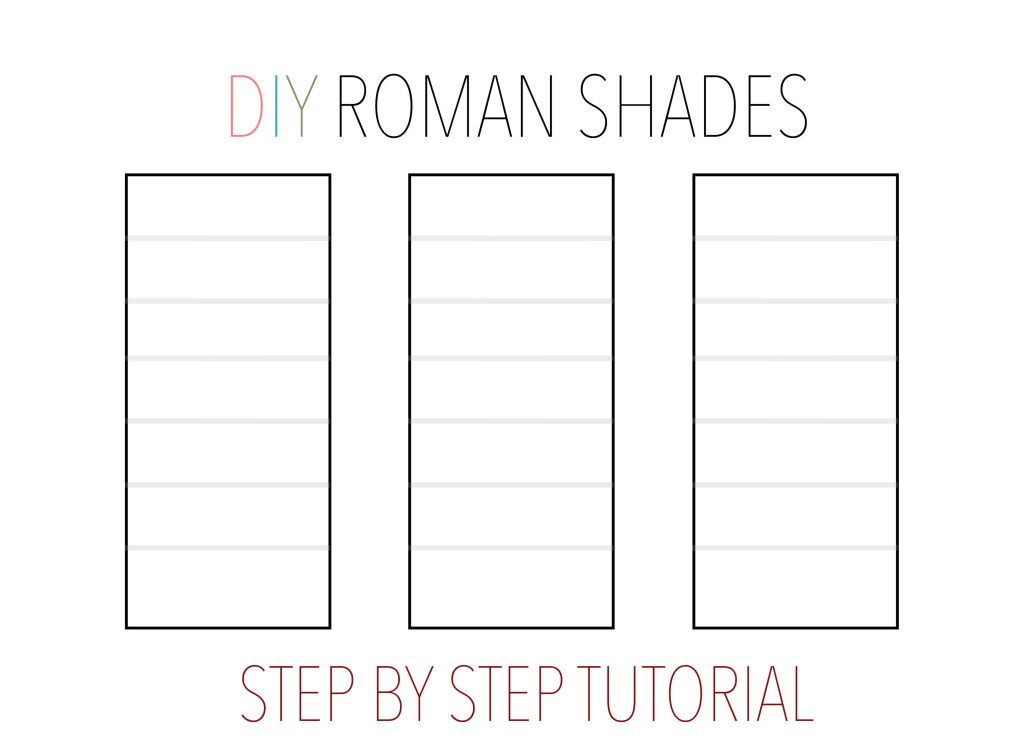
Materials needed:
Fabric for your shades {see measuring instructions below}
5/16 wooden dowels {I used 6 per shade}
Extreme Craft Glue I used E6000 Fabric Fuse Extreme Strength
5/8 wooden dowels {1 for the bottom of each shade}
1X2 cut to the width of your window opening
L brackets to install the 1X2
Staple gun and staples
Three small eye hooks for each shade
Miter saw
and 14 small loops for each shade {I used tiny metal washers for this because I’m legit like that}. I mainly didn’t want to go to another store and Walmart had washers that worked perfectly.
Sewing machine
Needle and thread
Step 1. Measure your window, and cut two pieces of fabric for each window {one for the front and one for the back}. I cut mine exactly the width of the window but I added 5 inches to the height. I used the same fabric on the front and back because it was cheap fabric from Walmart. But if I had bought expensive fabric, I would have used cheap fabric for the back.
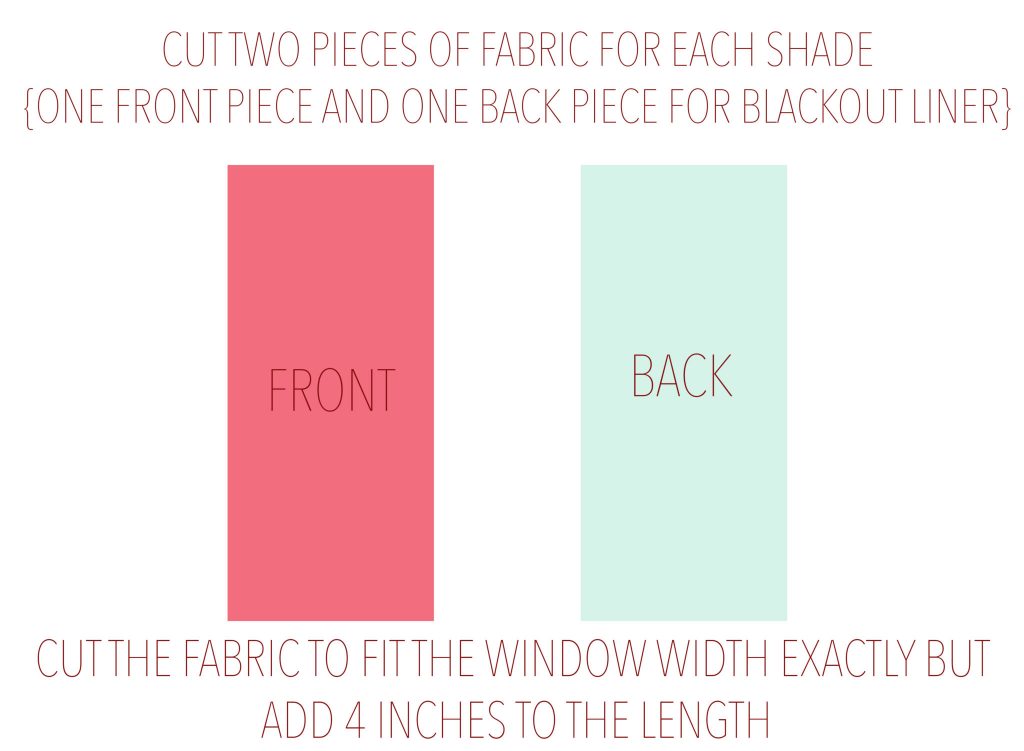
Step 2. Sew a 1/4 inch seam along the two long sides of the shade. This will make your shade 1/2 inch less than your window openings. This should be perfect. 🙂
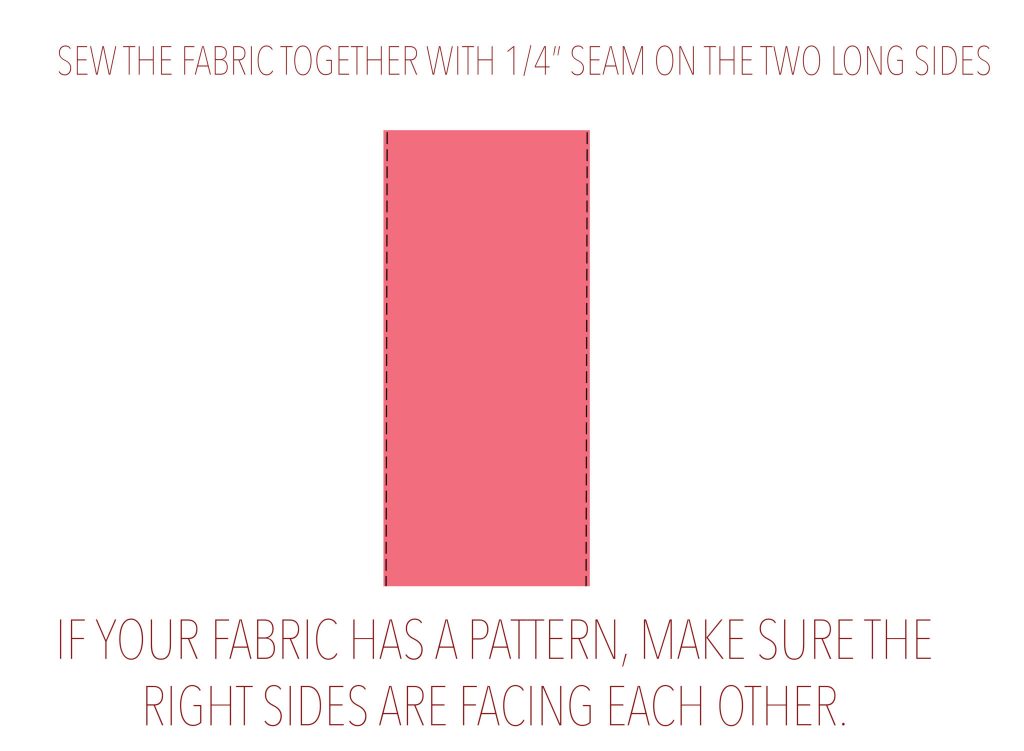
Step 3. Turn your shade right side out and iron the shade and along the edges.
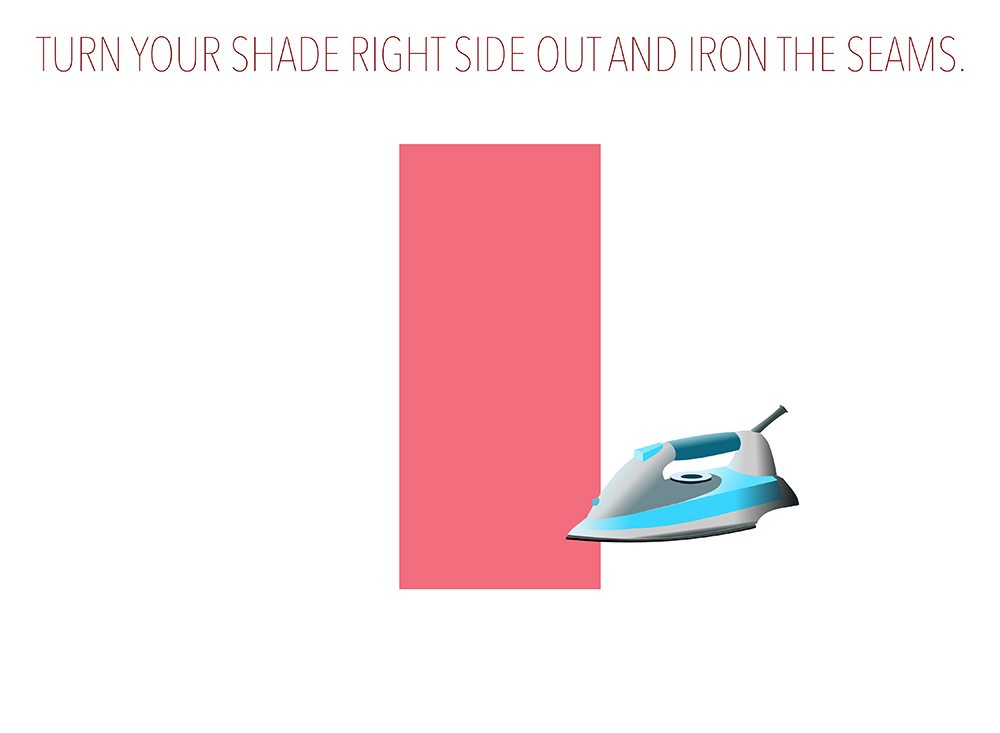
After it’s nice and ironed, carefully turn the shade inside out again.
Step 4: Decide how many dowels you want for your shade and mark the spots with a pencil. I used 6 on each shade because I wanted a lot of folds. The dowels should be evenly spaced on the fabric. I think that a good rule of thumb is to use a dowel every 7-10 inches.

Make sure you leave 1 inch of extra fabric on the top of your shade. This is to staple your shade to your 1X2. After you leave 1 inch on top, mark every 8-10 inches. So, if your shade isn’t as tall as mine, you will need less dowels. {Remember to mark on the inside/front of your shade. In other words, your shade should be inside out at this point}.
Leave 3-4 inches of extra length on the bottom also. This will be hemmed for the larger dowel in a later step.
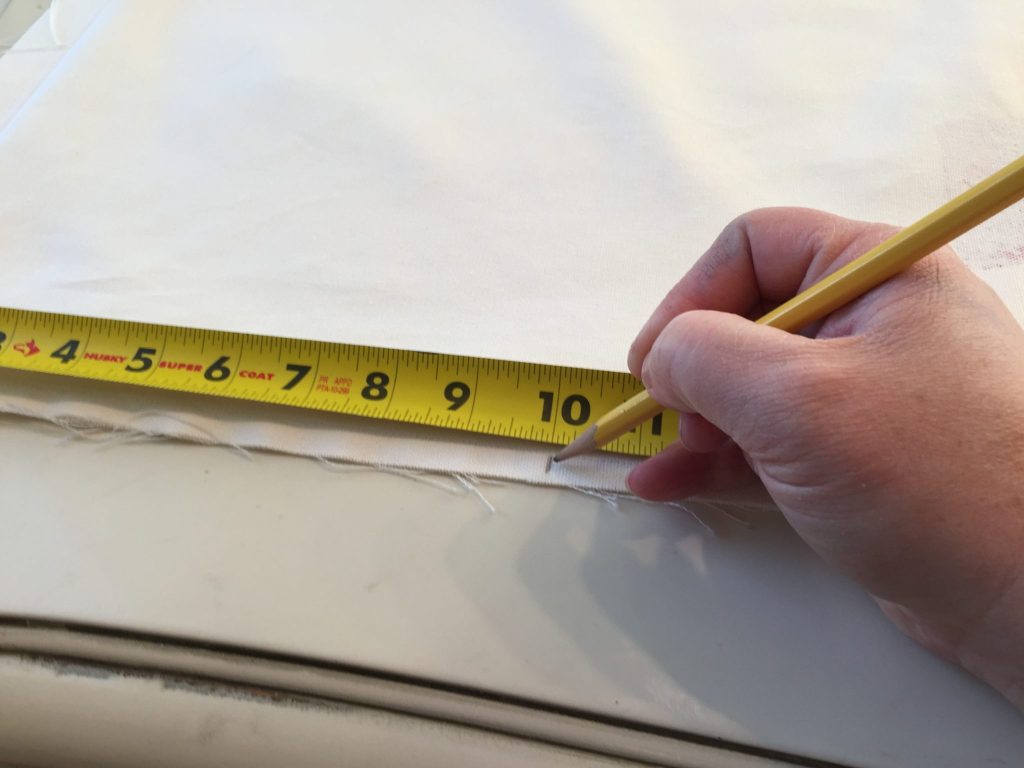
Step 5: Leave your fabric inside out and measure the width between your hems of your shade and cut your 5/16″ dowels 1/2 inch shorter than that measurement.
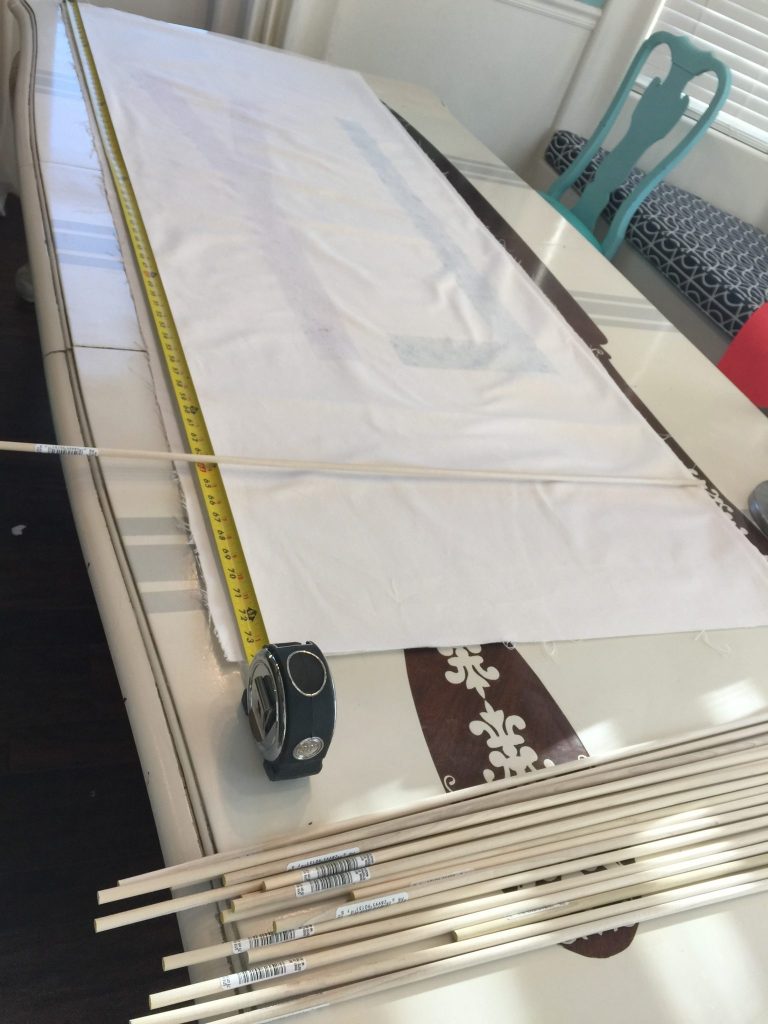
Step 6: Glue on the 5/16 inch dowels. Center them between the hems. I put 4-5 glue dots under each dowel to make sure the dowels were secured well. Watch the video at the end of this post to see the gluing process. The dowels will be on the inside of your shade, so make sure you are gluing them on with the shade inside out!
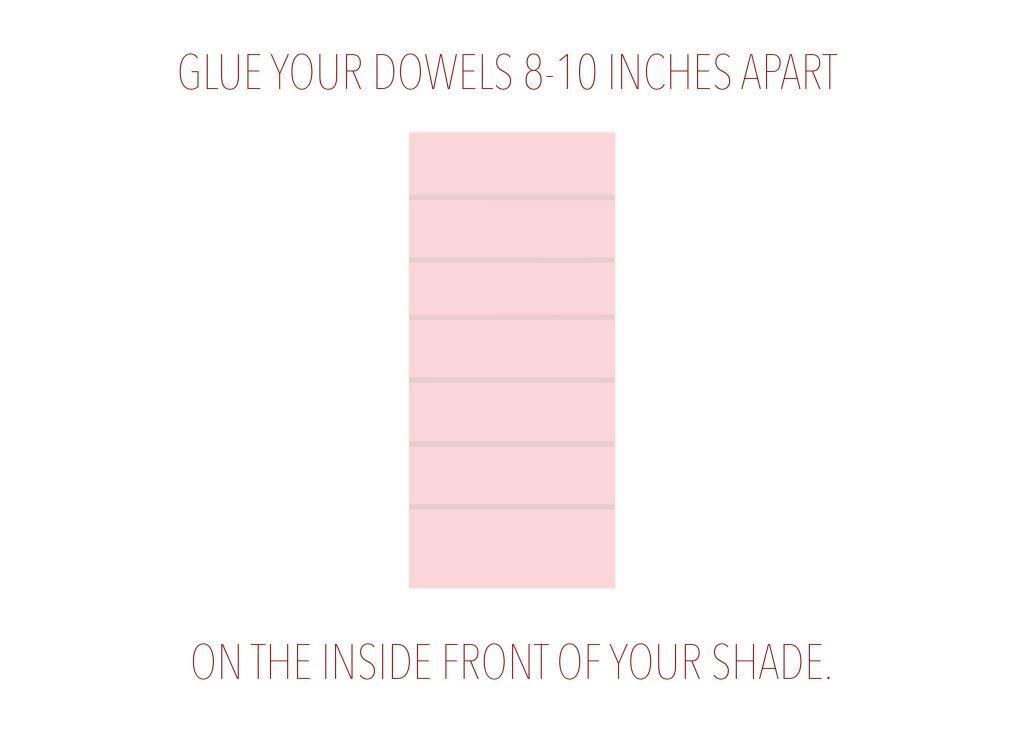
To help with page load, I had to break up this post, please keep reading.
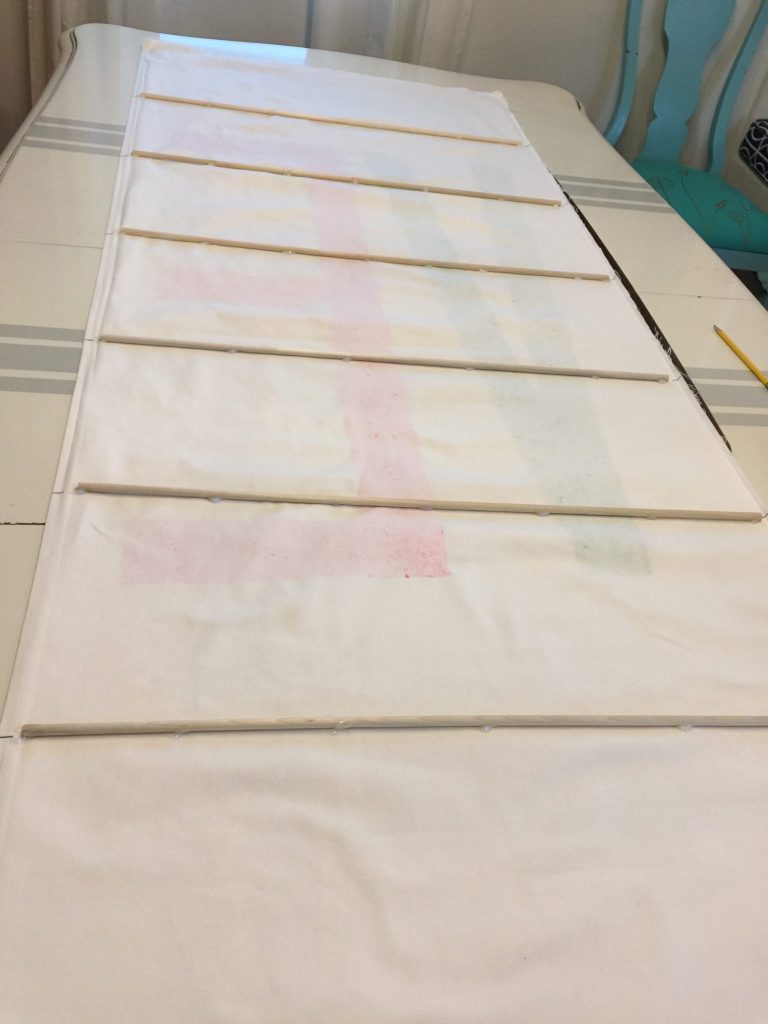
I used E600 Fabric Fusion to glue on my dowels and it worked great. It dries clear, so don’t worry about it leaving a colorful residue. 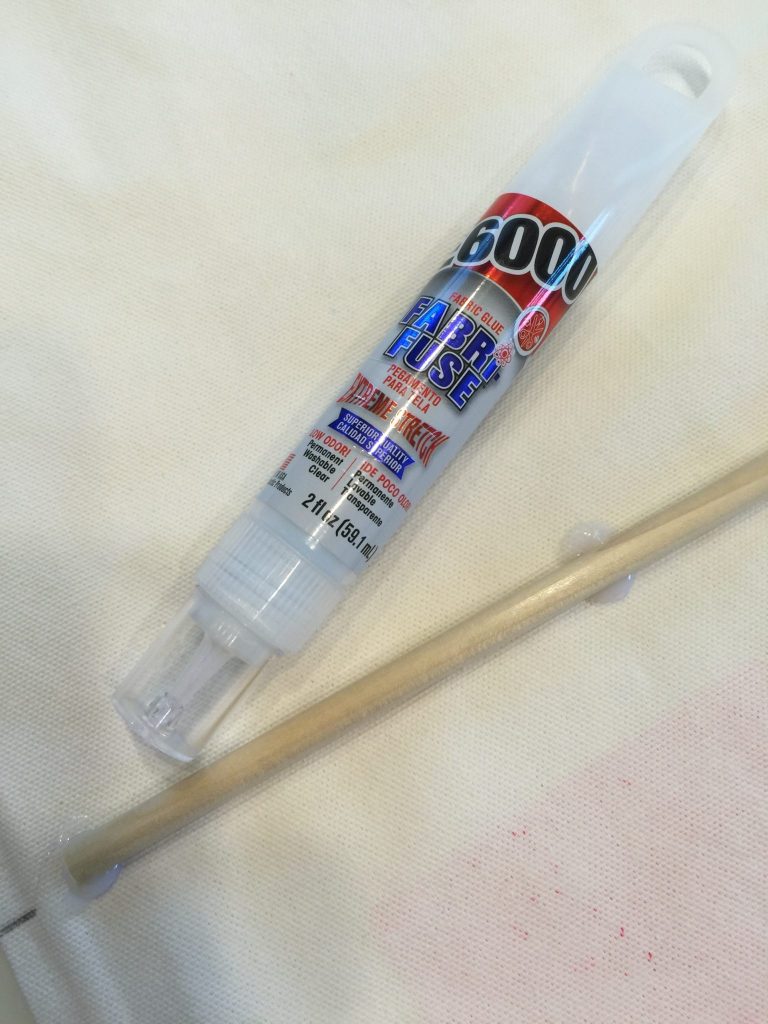
Step 7: Let the glue dry overnight.
Just to prove my claim about it drying clear, here is a picture after the dowel had dried overnight.
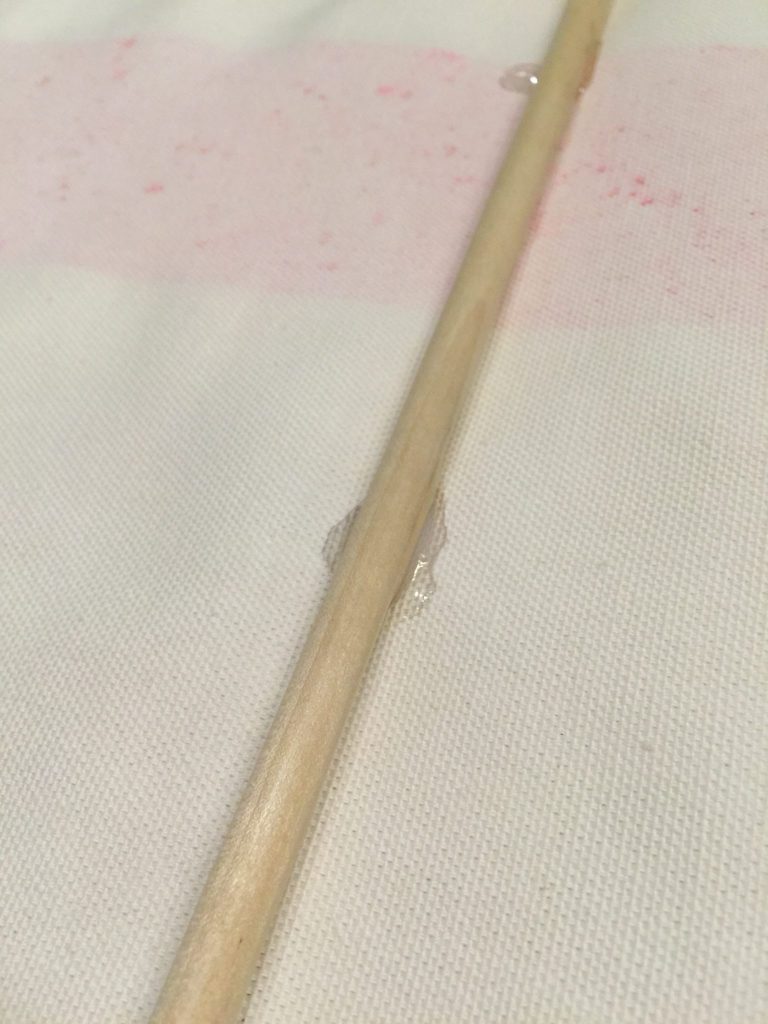
Step 8: Carefully turn your Roman shades right side out. It was tricky so take your time.
Step 9: Sew an 1 1/2-1 3/4 hem at the bottom of each Roman shade for the 5/8 inch dowel to go into. I sewed mine along the top and one side leaving the other side open until I slid in the dowel. Then I hand stitched to closed.
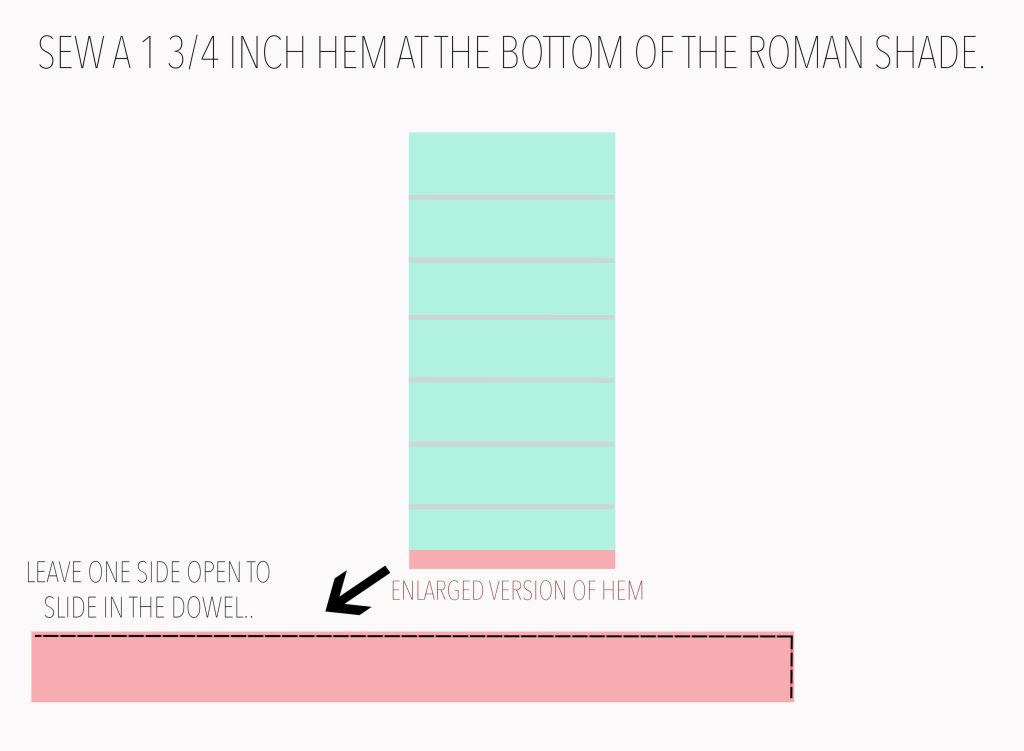
Step 10: Slide in your larger dowel to the bottom hem. The purpose for the larger dowel is for it to be heavier at the bottom so that the shades come down easily.
Step 11: Now that the dowels are installed, we will create a path for the strings on the back of each shade. I used metal washers for this step. The truth is, you can buy this super cool roman shade ring tape stuff that has rings on it that you can sew to the back of your shades, but I couldn’t find any locally, and personally I thought the washers worked great.
Sew a washer {or a small plastic loop} to fabric directly right by the sides of each dowel. Make sure to do this on the back side of the shades. Also, I put one loop of thread around the front of each dowel to make sure that the washers were night and tight. Just make sure to use the same color of thread and you will never see it on the front of your shades.
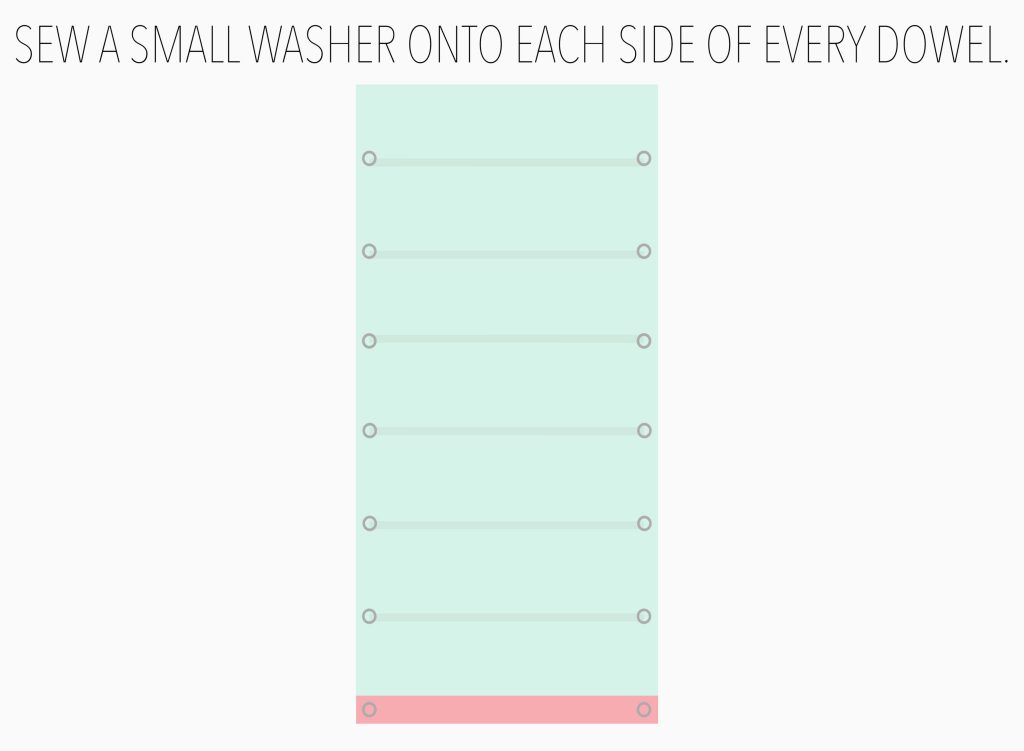
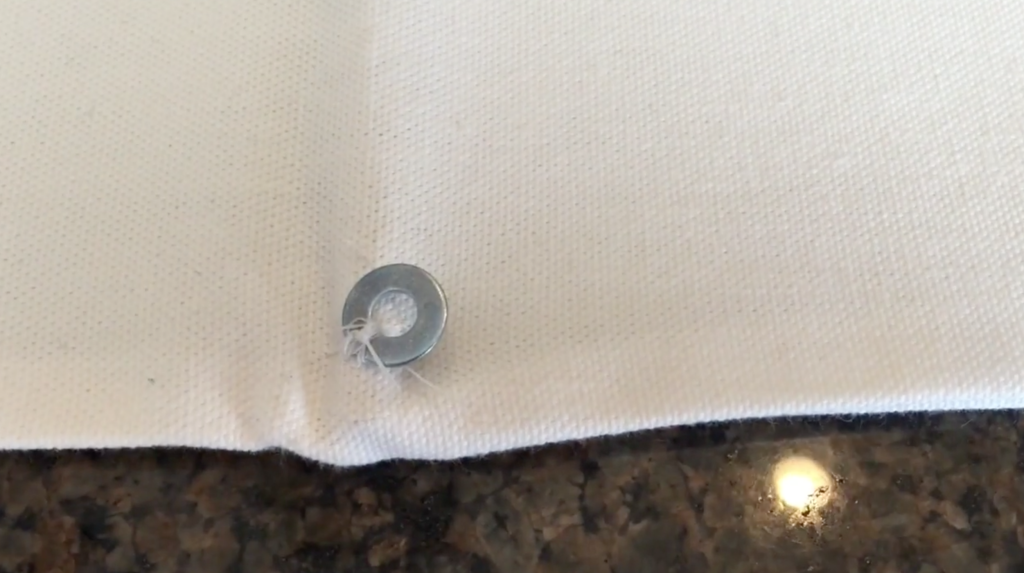
Step 12: Cut your 1X2 to be the width of your window and staple the top of your fabric to the top of the 1×2. We were worried that the sides of the 1X2 would show, so we spray-painted them white. We also hammered in the staples to help them be flush with the wood.
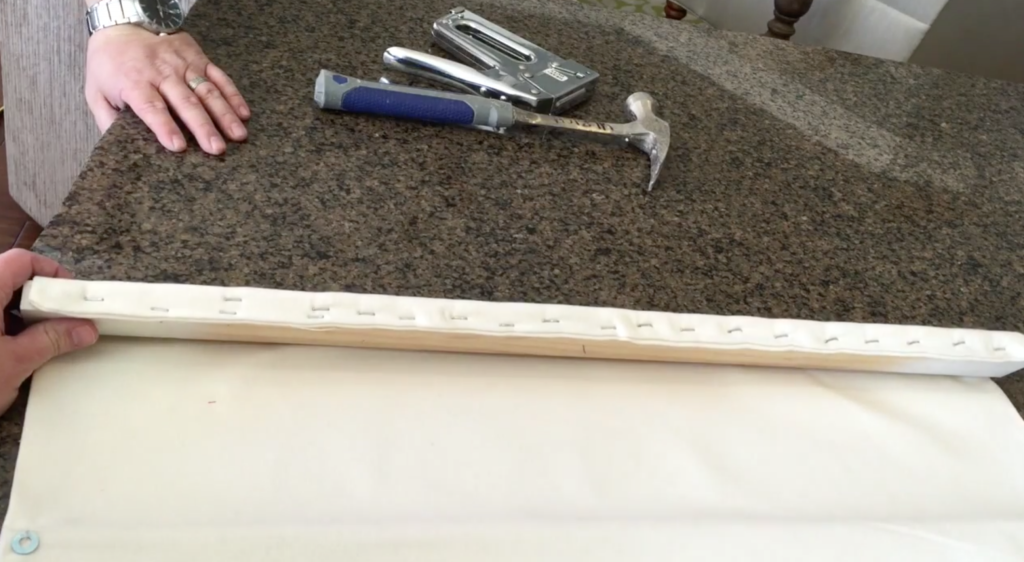
Step 13: Install three eye hooks in the bottom of your 1X2. One on each side and one in the very middle.
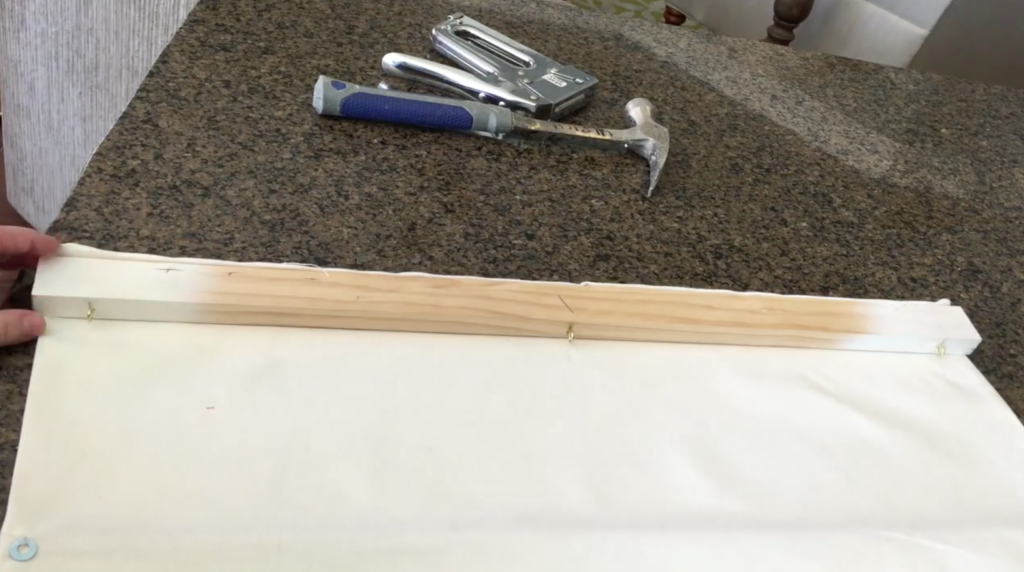
Step 14: Install your shades to the wall with your L brackets.
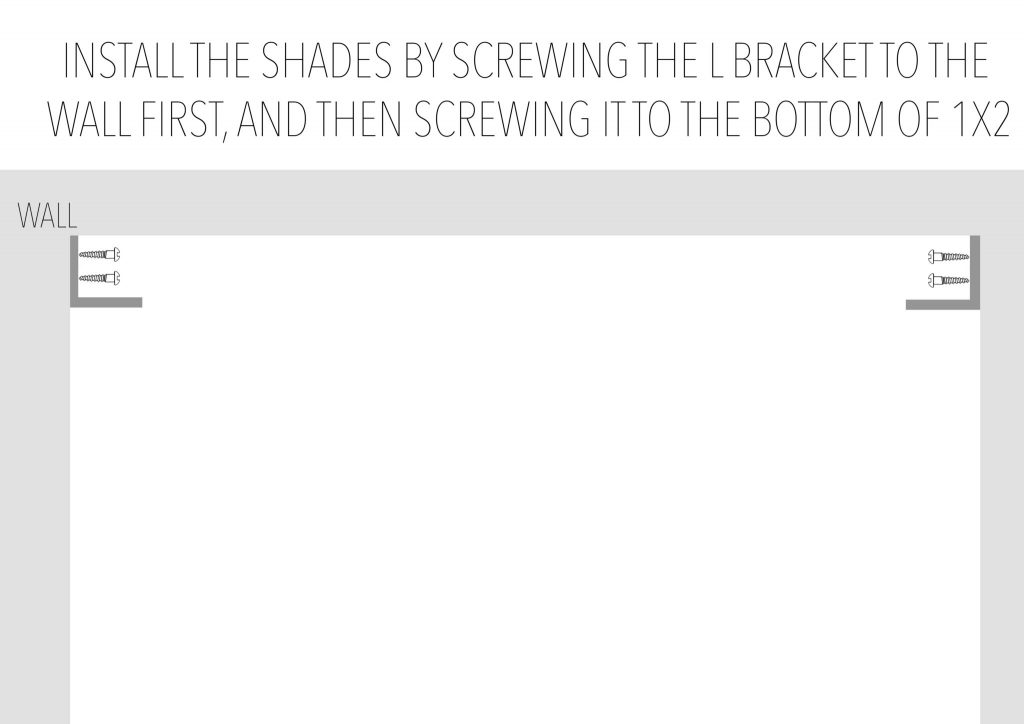
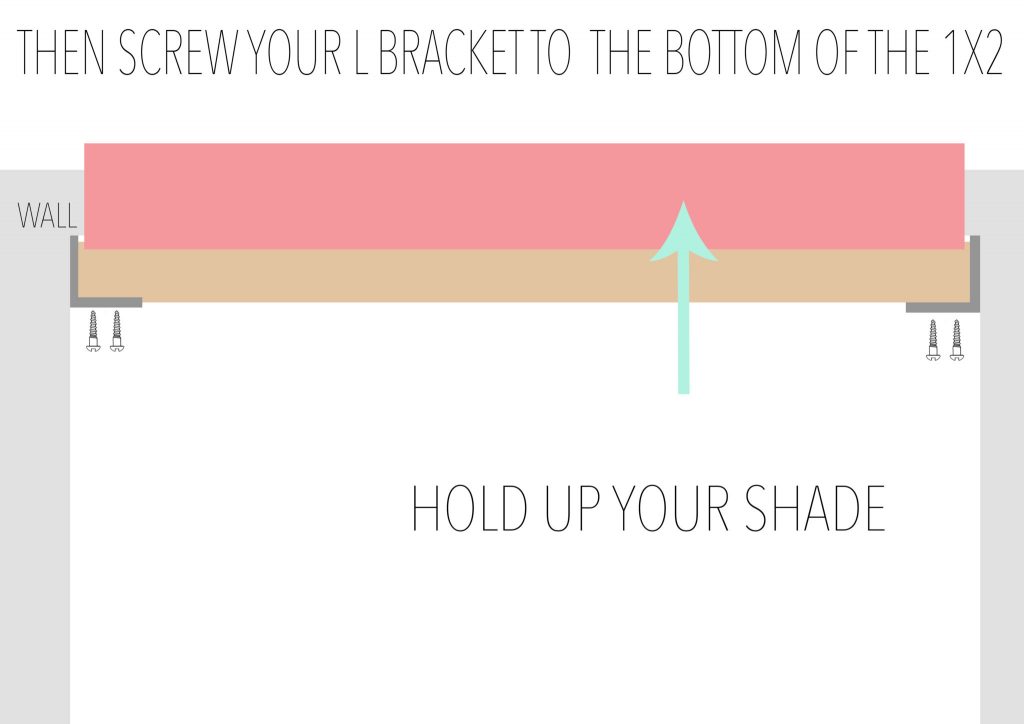
Step 15: Loop your strings like the image below: Click the image to enlarge.
Step 16: Install a cleat to tie your strings to when the shades are up. I had decorative cleats that I had used on previous curtains for tie backs so they worked great on the two outer shades. I just used a cheap cleat on the middle shade.
We put the world “lovely” on our shades because I want them to feel like a giant piece of tryptic art. For the process of painting the words onto the shades, check out our Lovely Roman Shade tutorial. Or watch the video below:
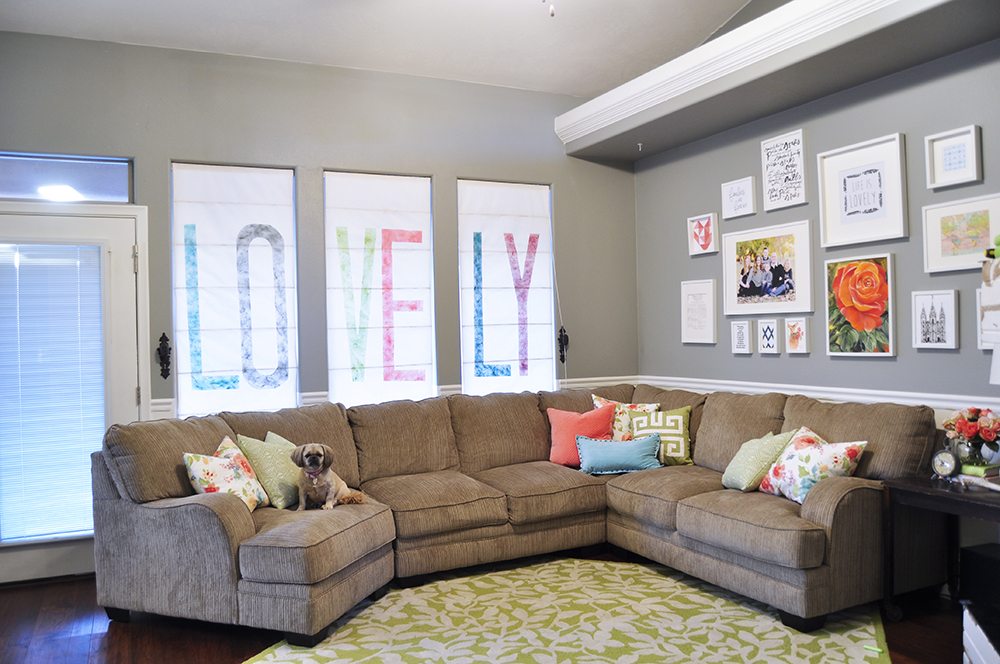
Room information since I know some of you will be curious: Couch is Ashley Funiture brand, but I bought it locally at a store called Downtown Furniture because it was cheaper there. The color is called platinum and it’s a chameleon. Sometimes it looks grey and sometimes it looks tan. I love that about it. Pillows are from HomeGoods except the Greek Key Green one in the middle. That one is from Walmart. Rug is from HomeGoods. Wall color is Hazy Stratus by Valspar. {But to be honest I prefer Behr paint so I recommend color matching it at Home Depot}.
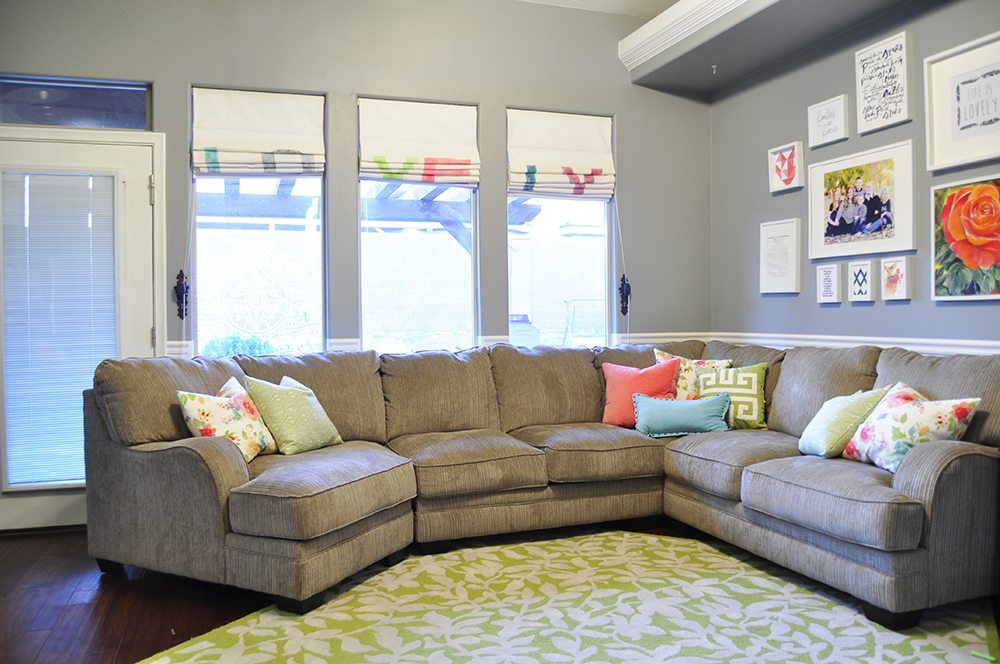
I love that I can still read the “lovely” when the shades are up too!
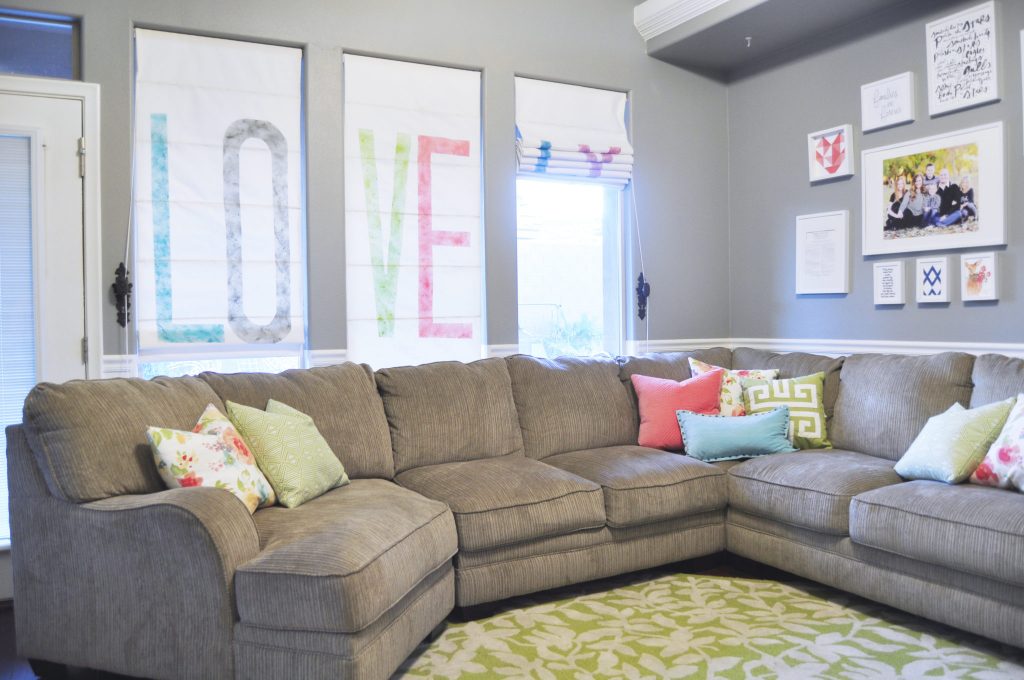
If you have additional questions, please comment, and I will answer them ASAP.
XOXO,
Brooke

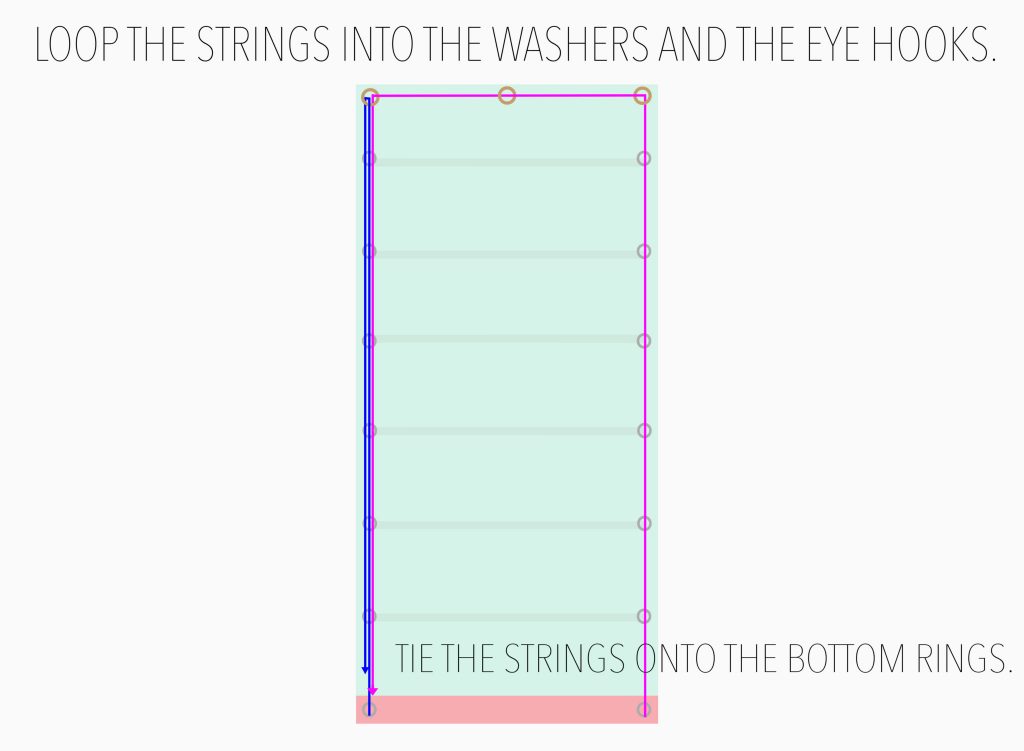
Love these shades so much! I may have missed in in the post somewhere, but did you estimate the total cost for materials per shade? I’d love to know! Thank you!
Great question! Each one took 2 yards of fabric and the fabric was $5.97 per yard. I wanted the fabric to be heavy so I used outdoor fabric. Six 5/16″ dowels {$.57 each} and one 5/8″ dowel {$.97}. Everything else I had on hand, but they probably cost a couple bucks at most.So the shades cost right about $18.00 each.
Thank you for this!! I have really been wanting a roman shade for my kitchen! I love love love the ones you made!
Nice easy to follow instructions! One question: what kind of string did you use?
I used plain old nylon string like this:http://www.walmart.com/ip/BeadSmith-Super-Lon-Cord-Size-18-Twisted-Nylon-White-77-Yard-Spool/30108759
Wow! Those look great…errr…lovely! 😉
Seriously, fab job. I’m completely going to do this.
Amazing. I just got a quote for $600 just for the labor to do shades for just one window in our living room. I really think I can do this after seeing your tutorial.
One question, about how long does it take to make one. I have a 3 year old so I need to plan my time accordingly because she will want to help and that’s not always a good thing!
After you get the hang of it I would say 1 hour per shade. The first one was a little longer because I was still in the learning phase. 🙂
Beautiful shades! Did you do anything to secure the front fabric to the back fabric through the body of the shade? I made roman shades about 15 years ago with another internet instructional, but this one is much simpler. The other one had me sew the dowels in between the two pieces of fabric. I am wondering if the fabric ever bunches or separates when the shade is lifted.
Thanks for posting this easy instructional!
Nope I didn’t secure the back fabric, and it doesn’t bunch or separate. It may be pure luck, but I haven’t had any problems yet. 🙂
I like your approach to Roman Shades – I’ve been trying to decide just how to make them and I am going with your method. Getting ready to cut my fabric right now, but I have a quick question – I was thinking I should glue the dowels to the backing fabric – but it looks like you glued to the (inside) front – is that correct? And does it make a difference? Also, are the glued dowels in your shades holding up well? I had originally thought I’d need to do rod pockets for dowels – but this just seems so much easier! Thanks for your post!!
Yes, they are glued to the front fabric on the inside. 🙂 Good luck on yours! xoxo
I glued the dowels to the front fabric as instructed and the line of glue shows through to the front as a ‘wet’ spot. Has anyone else tried gluing to the lining instead? I will have to remake the shade and was trying to decide between dowels or changing methods and just adding another column of rings/string down the center instead of gluing dowels.
I glued mine to the liner. Be sure the liner is wrong side out when you glue the dowels to the fabric!!!
This might be a silly question but how exactly do the strings get looped? Everything else is very detailed but that was short and sweet. Not sure how the one looping around the whole thing has a purpose if it gets tied at the bottom. Help!!!
You only tie one end of the string to the bottom of the shade. One string is tied to the right, and one string is tied to the left.
After the strings are looped up the side, one string goes across the top and meets the other string. When you pull them both, the shade goes up.
Thank you, Thank You, THANK YOU! This is by far the best Roman Shade tutorial I have seen! When I began reading your post, about being confused by other posts, I was like, “Yes! She get’s me!” Can’t wait to start mine!
Well, my first attempt was a fail. When I glued on the dowels the glue soaked through and glued my from a back fabrics together. I couldn’t get them apart. Not sure if I’ll try again or not. Wondering about sewing a pocket for the dowels instead if gluing them.
Yes that would totally work.
You can soften the glue with fingernail polish remover (actitone).
I just takes a VERY small drop of glue.
I would love to make these shades, I only have one problem. My window is about 140 inches so one of the side brackets on each shade would need to be in the top. My question to you is, would this also work. I have priced shades and they are outrages and I’m pretty sure I could make some that would please me more than ordering some that are very expensive. I am thinking if this works, I have 23 windows in my house that I would work on. thanks
Marla,
Tell me more. I’m trying to picture what you are explaining!
Thank you!!! I had made these shades a few years ago but lost the instructions – I am so happy I found your site because this is THE BEST DIY roman shades instructions. I have made several different types and these are the best, BY FAR, in terms of ease in making and professional looking results.
This tutorial is great! I’ve had to read through it a couple times as I’ve decided what I wanted to do with my shades. Someone commented earlier asking about securing the layers together. To me it seems like when you sewed the washers on by adding the loop around the front of the dowel that would hold them together. Hopefully that helps with her question!
I had a quick question – we’re renting and adding these to porch doors so I can’t add the 1×2. We were just going to attach the curtains to the rods already on the doors. If I added washers at the top, right under the rods, do you think that would work the same way the eye hooks do for yours? Not sure what other option I have.
Thanks!
I think that would work, you’ll just want to make sure the tops are secured very firmly to the rod. If you use a 1×2, you can staple it and that’s easy, especially to make adjustments of 1/4 inch or 1/2 inch if the bottom turns out to be a little too long. If you use a rod, you’ll probably want to sew a pocket for the rod (kind of like you do on the bottom of these shades for the bottom dowel). You’ll have to be quite careful that you’ve measured accurately when you make the pocket for the top rod to make sure you get the curtains just the right height and that they are even and not slanted.
Came across your DIY and I am really happy that I found a DIY project for roman shades that DO NOT include those stupid plastic pieces of crap! One thing I am confused about is how you would get your shades to stay up once you have pulled your string. I believe I have understood how you loop yours, but what do you do to get your shades to stay up? Do they automatically stay or do you have to tie them? This is my one deal breaker is I want something simple and sturdy that I don’t have to spend so much time with 2 times a day, pulling up and down. Thanks!
You have to loop them on a cleat.
These shades come up and down much easier than traditional mini blinds. Looping the string on the cleat is very easy to do and undo and holds the blinds very snuggly.
Thanks for taking the time to post this tutorial! It was super helpful. I just made shades for my baby’s room; he’s due in three weeks and I’m not a very experienced seamstress, but your tutorial made it easy!
I made a couple of tweaks to the instructions to fit our needs. (1) For the backing I used blackout material, which makes the room nice and dark (there are a few gaps on the edges where light sneaks in, but overall, it worked really well). (2) The window is quite wide and I couldn’t find material I liked wide enough to make a single shade to cover the window, so I made two shades; I attached the shades to one long 1×2 and attached both shades to the same 1×2; each shade has it’s own pulley system so I can have one shade down and one shade up, if I want to. I took great care to get the widths and lengths of the shades even and sufficient for the window, so I think this method is a bit more work, but worth it in my opinion. (3) I did three columns of washers on each shade, just to be sure the shades pull up easily and neatly each time, this might have been overkill since the shades are fairly narrow (I ended up with six rows of washers across the width of the window since I put two shades side by side), but for a wider shade, I’d definitely add an extra column or more of washers. (4) I used drapery cord for the string (I got it at my local fabric store). It’s just like the cords used for mini blinds and wasn’t very expensive. It looks really sharp and makes the curtains look professional (it looks like you might have used this type of cord on your shades as well).
This method was definitely much quicker than sewing pockets for the dowels, however, after getting the dowels glued onto the curtains, I realized I cannot ever wash these shades. If I were doing this again, and especially if I was using expensive material, I’d probably consider sewing pockets for the dowels just so I could wash the shades and not have to make new ones once these get too dirty.
Thanks again for the great tutorial!
Very good point about sewing pockets. Thanks for the feedback!
How did you make the tutorial? What is your training?
Great job!
I would like to glue the dowels to the back piece since it is the cheaper fabric. Will that work?
Only one way to find out…glue one rod and try it. I’ve never done it that way, but it seems like it would work!
I have a heavier fabric and I really don’t want to line it. What if I glue my dowels to the back of the fabric, then pick up an inch or two and glue that straight across so the faux pleat holding the dowel is on the front side. Then, I think it would look pleated even closed. Sew my rings at the top of the pleat and include both pieces of fabric for extra strength. Lol I’m thrifty and lazy. Do you think this would work?
I can’t say for sure that it would work but I definitely think it’s worth a shot! 😉 Good luck!
Just wondering how that glue held? Still holding strong? I am gluing mine down tonight and want to make sure it will hold. Thanks for the tutorial!
It has held up great!
For the person in the rental home, I once made a Roman shade and used existing roller shade hardware. The shade itself had gotten old and nasty, but the hardware was very durable. I removed the shade from the roller, sewed a pocket at the top of the Roman shade just big enough to slide it over the roller and screwed it into the roller at either end so it wouldn’t bunch up when I raised the shade. Worked like a champ! I also didn’t use dowels at all. The fabric was fairly sturdy and had dots in the pattern. I sewed through front and back when I attached the rings to the back, using the same thread color as the dots so it didn’t show.
Love the sectional too! Would love to know what brand and if it is comfy? Thanks!
And the shades are awesome!!
Hi! Just stumbled across this tutorial for DIY roman shades. Great info, thank you! I have also been searching high and low for a sectional sofa with a “cuddler” like this & wondered where you found yours?? Thanks again!
Do u glue the dowels to the front or back fabric??
To the back.
Finished shades for my daughter’s room this weekend, wish I could share a picture as they turned out GREAT! Spent maybe 100$ total for three shades 34″x59″ made of linen. I sewed pockets for the rods instead of glue because the glue showed through. I also made the first one too short (oops, measure twice, cut once and all that…) but my little fix isn’t noticeable unless you look close 🙂 By the way, I sew maybe once a year, so really anyone can do this project and save a LOT of money, and have the sense of pride when you see your work on display!